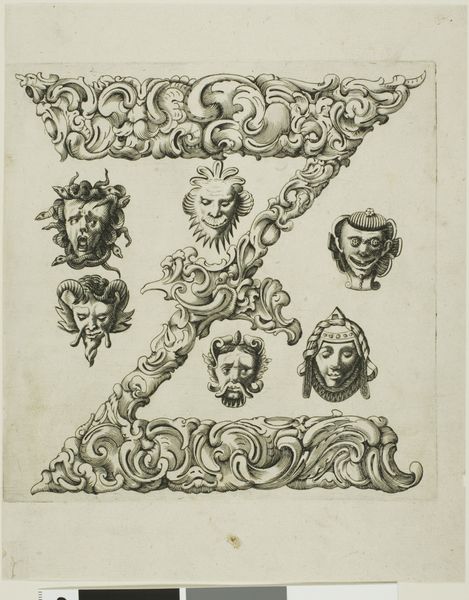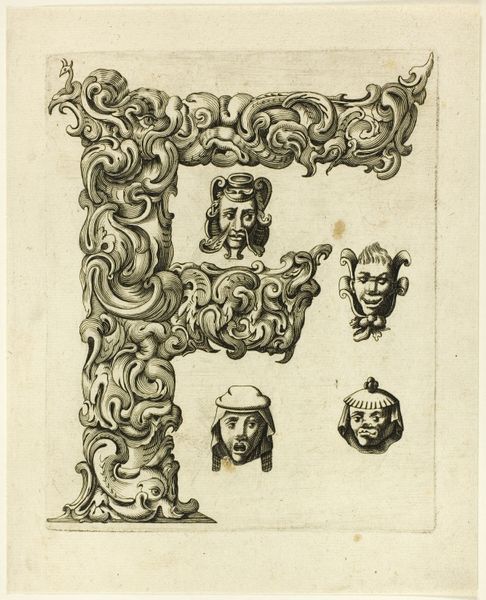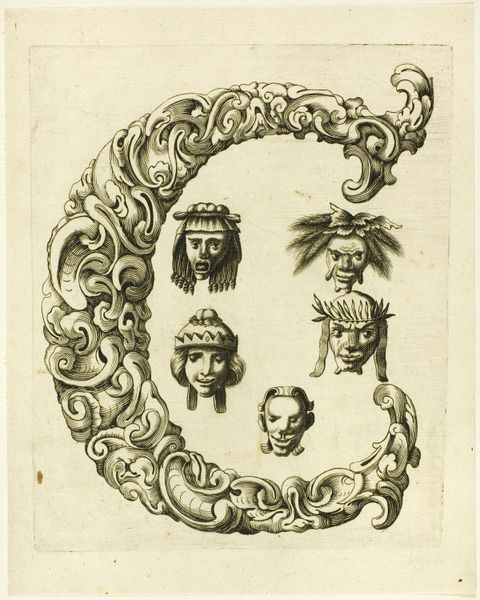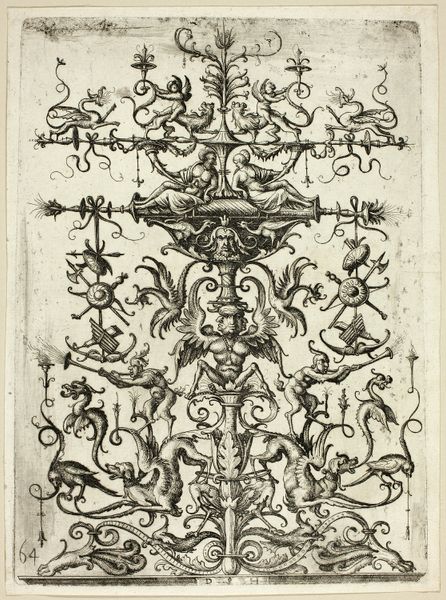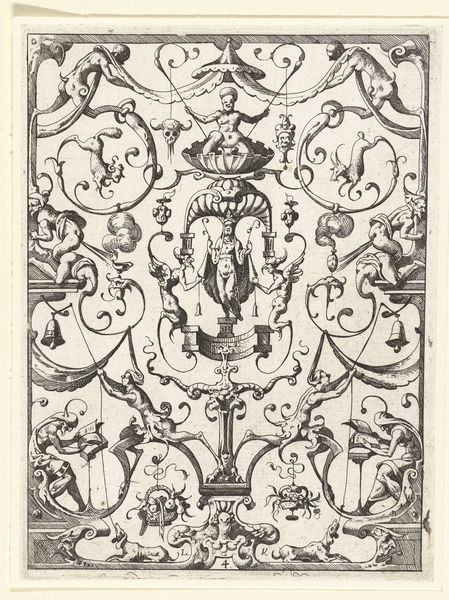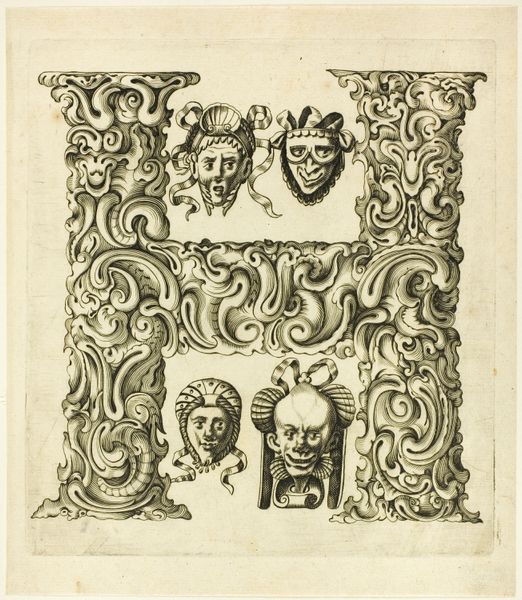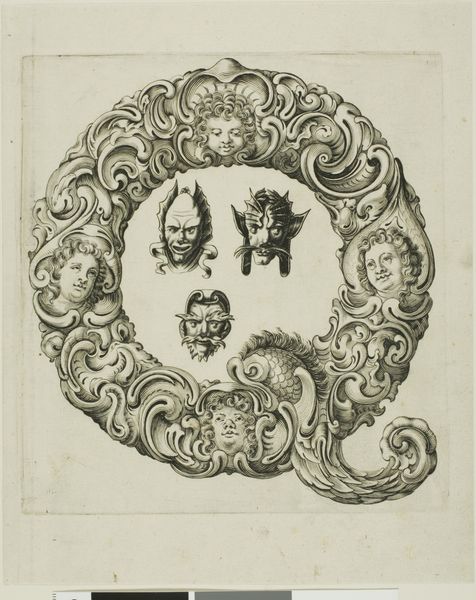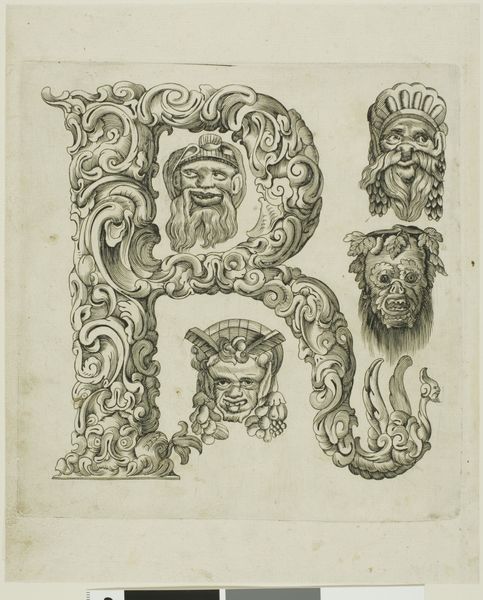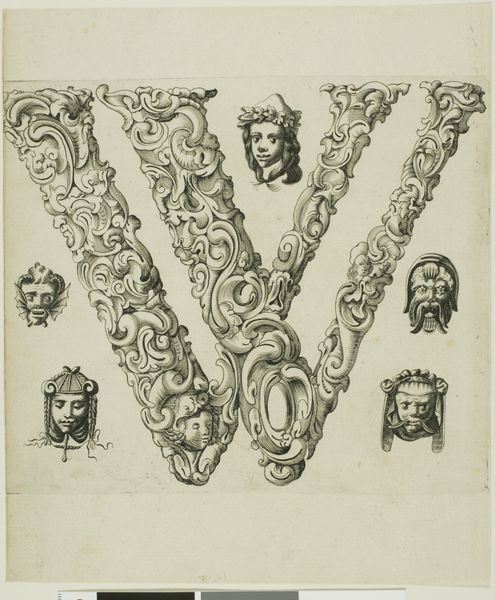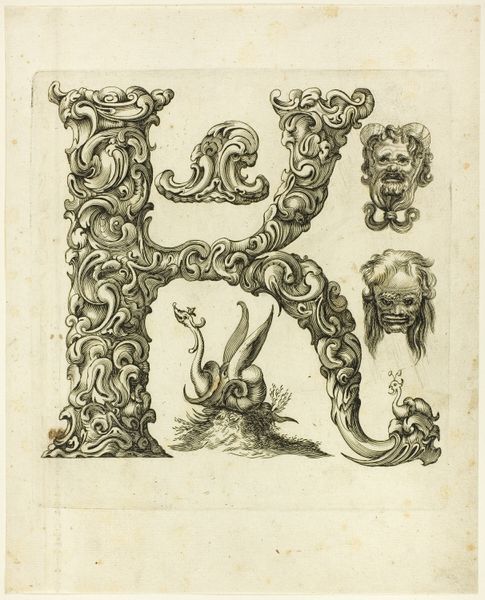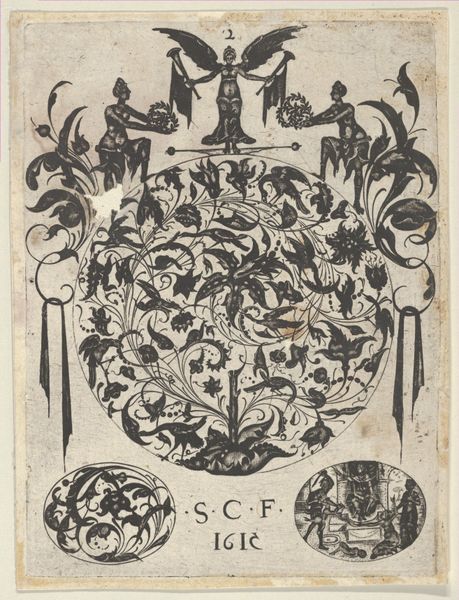
drawing, print, paper, engraving
#
drawing
#
baroque
# print
#
figuration
#
paper
#
geometric
#
engraving
Dimensions: 263 × 214 mm
Copyright: Public Domain
Curator: This engraving, entitled "Letter A", was crafted in 1630 by Peter Aubry. It resides now in the collection of the Art Institute of Chicago. Editor: My first impression? This feels like Baroque opulence distilled down to its essence—intricate, even dizzying. The sheer density of ornamentation is fascinating. Curator: Yes, Aubry presents us with an A that’s almost bursting with visual information. Beyond the form of the letter itself, consider these ancillary figures floating around it – each distinct, each expressive. To me, they hint at a broader cultural narrative. Editor: The figures do add to the piece, don't they? But I'm most drawn to the engraved line work itself. Notice how Aubry uses varied line weight to create a sense of depth and volume in the swirling acanthus leaves composing the A? It's a tour-de-force of technique. Curator: Absolutely. But beyond technique, I'm interested in what these recurring motifs might signify. Floral elements are rife in classical art. And it echoes the cycle of life and rebirth— a concept central to human existence. I am curious about the prevalence of different human faces. Each offers the opportunity to explore different cultural norms. Editor: Perhaps, but I see a sophisticated play with negative and positive space. Look at the contrasting textures achieved solely through the controlled application of ink. And it shows so many skills in visual design! I cannot help but be fascinated by such detail. Curator: Fair enough. But it does not come across merely as design skill. It invites speculation, urging the viewer to decode not just the letter, but the underlying meanings that resonate across centuries. We keep seeking something within all of that history, so this A embodies humanity. Editor: An interesting point. The beauty for me remains in the artistry with light and shadow – its tonal range elevates what might otherwise be a purely functional form into something visually arresting. Though perhaps function and beauty are not always separate... Curator: In a way, then, we're both seeing facets of the same complex idea – the enduring human need to find significance in form and image, to layer meaning upon meaning. Editor: Indeed. Ultimately, Aubry gives us more than just a letter; he presents us with a microcosm of the artistic spirit of his era. It makes me think of the value that letters carry to our lives in our own period.
Comments
No comments
Be the first to comment and join the conversation on the ultimate creative platform.
